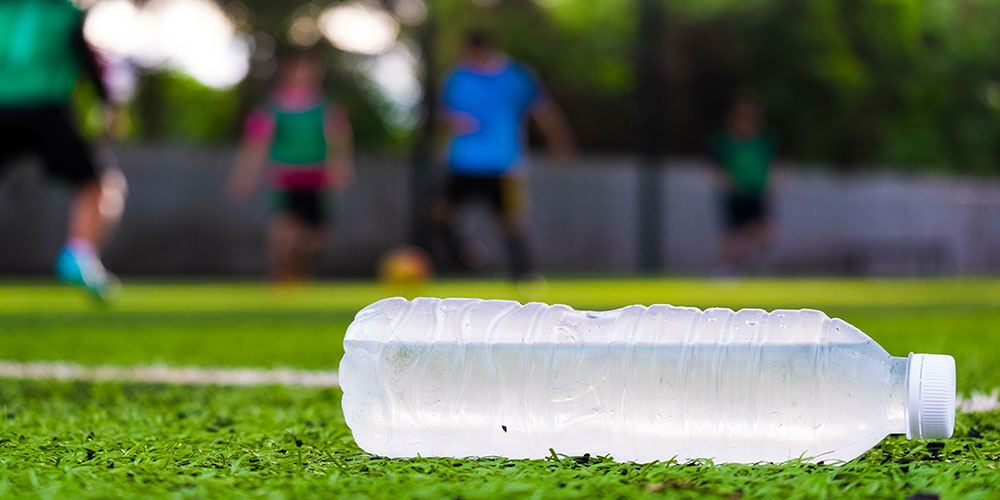No, you’re not crazy — this summer has been particularly hot. In fact, the first three weeks of July were the hottest three-week period ever recorded, according to the World Meteorological Organization.
Much of the U.S. has been subjected to extreme heat and humidity this summer and the pattern is expected to continue as schools start to reopen for the new school year. Severe heat can be dangerous to all, but students who play outdoor fall sports, including football, soccer, and cross country, are at increased risk of heat-related injuries.
Heat-related illness is a leading cause of death and injury among college and high school athletes. Common symptoms include disorientation, unusual behavior, nausea, vomiting, headache, dizziness, and weakness. An estimated average annual number of 9,237 time-loss heat illnesses occur among U.S. high school athletes, most commonly during preseason football practice, says the Centers for Disease Control and Prevent (CDC).
Another CDC study reports football players accounted for 5.3% of all nonfatal heat-related visits to emergency departments, and 88% of football heat illnesses occurred in August. The exertional heat illness rate in football (4.42 per 100,000 athlete exposures) is 11.4 times that in all other sports combined, according to a study published in the National Library of Medicine.
The 2021 Annual Survey of Football Injury Research found that from 1996-2021, 68 football players died from exertional heat stroke — 50 of whom were high school students and 13 of whom were college students. Exertional heat stroke occurs when body temperature exceeds 104.5 degrees Fahrenheit and is associated with signs of organ system failure due to hyperthermia.
While schools’ main concerns regarding heat-related injuries should be student welfare, these injuries — which are largely preventable and treatable — expose schools to potential lawsuits. In 2023, the University of the Cumberlands in Kentucky paid $14 million to the family of a student wrestler who died of heat stroke after a practice in Aug. 2020. A lawsuit from the family alleges that 20-year-old Grant Brace died a few hours after he “laid on the wrestling mat begging for water.”
In 2018, a student at Saint Xavier High School in Louisville sued the school, claiming negligence during a cross-country practice that resulted in his hospitalization. The lawsuit says the student suffered a heat stroke and was put in a medically-induced coma. Louisville was under a heat advisory at the time and the heat index the previous day was 107 degrees Fahrenheit, according to the lawsuit.
In a new blog post, the American Red Cross offers 10 ways school leaders and coaches can ensure players stay safe in the heat:
- Avoid scheduling outdoor workouts and exercise during the hottest times of the day; schedule them for early in the morning or later in the evening
- Reduce the intensity of the workouts or exercise until athletes are more accustomed to the heat
- Encourage players to drink lots of water to avoid muscle cramping or heat-related illness
- Incorporate warmups into practices; stretching muscles before strenuous exercise helps prevent injury
- Plan frequent and longer breaks; ideally pause practice every 20 minutes for athletes to drink fluids and rest in the shade, if possible
- Reduce the amount of heavy equipment athletes wear in the extreme heat; encourage net-type jerseys or lightweight, light-colored cotton T-shirts and shorts
- Use the buddy system to encourage athletes to drink water and watch for signs of illness in their teammates
- Know the signs of heat cramps, heat exhaustion, and heat stroke
- Have an emergency plan in place
- Ensure coaches are trained in First Aid and CPR as they are often the first to respond to an emergency situation
For a more detailed resource on reducing heat illness in college and high school sports, check out this download from EduRisk Solutions.







